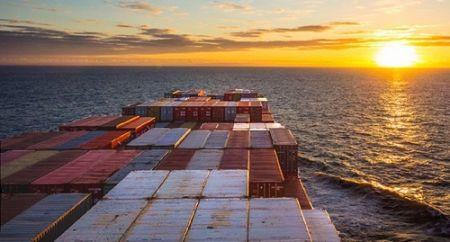[GEO’s Eye] When icebergs flip over, they reveal the colors that coat their base: blue, green, yellow-brown… Bluish hues have been spotted from space by meteorologist and glaciologist Jan Lieser (NASA Earth Observatory).
Slowly but inexorably, the Lambert Glacier in East Antarctica flows from the continent towards Prydz Bay, where it encroaches upon the Amery Ice Shelf. From time to time, massive chunks of ice break off from the front, drifting into the sea as icebergs.
While it is common to spot these ice giants, those that stand out against the pristine white of the snow-covered landscape are much rarer.
By examining satellite images of the region taken by Landsat 9 (OLI-2 imager), Jan Lieser, a meteorologist and glaciologist at the Antarctic Meteorological Service, detected « blue icebergs » in a photo dated October 26, 2024, as reported by NASA’s Earth Observatory on November 16.
Why are icebergs colored?
The ice of an iceberg, made up of compressed snow and frost, contains air bubbles that scatter light, making it appear « white as snow, » explains the observatory. However, sometimes seawater freezes on the underside of the ice shelf, hundreds of meters below the surface. Lacking air bubbles, this ice then takes on the color of the seawater and its impurities.
« Transparent sea ice can vary in color from deep blue to green, or even yellow-brown, depending on the respective concentration of seawater constituents, » explains Collin Roesler, an oceanographer at Bowdoin College in Brunswick, Maine (USA).
In a study published in 2019, Roesler noted that some icebergs near the Amery Ice Shelf took on a green hue due to the presence of iron oxides in the seawater, coming from rock dust carried from the continent. These iron-laden icebergs could transport this mineral—an essential nutrient for marine life—from land to sea.
How do icebergs flip over?
However, the underside of icebergs is only visible if they flip over. This movement can be triggered by melting or breaking off of an iceberg, making it unstable and more likely to overturn.
While studying the region by helicopter, Collin Roesler and her colleagues found a large number of flipped icebergs in this area. « Our analysis suggests that the Amery Ice Shelf is particularly conducive to the formation of green icebergs due to the conditions that favor the accumulation of frozen seawater on the underside of the shelf, » she explains.
In the image, the American oceanographer also spotted a patch in the snow near Cape Darnley. According to her, it is guano (bird droppings) accumulated by a large colony of emperor penguins. These colorful clues have previously helped scientists discover new colonies in remote parts of Antarctica.
Source: GEO




